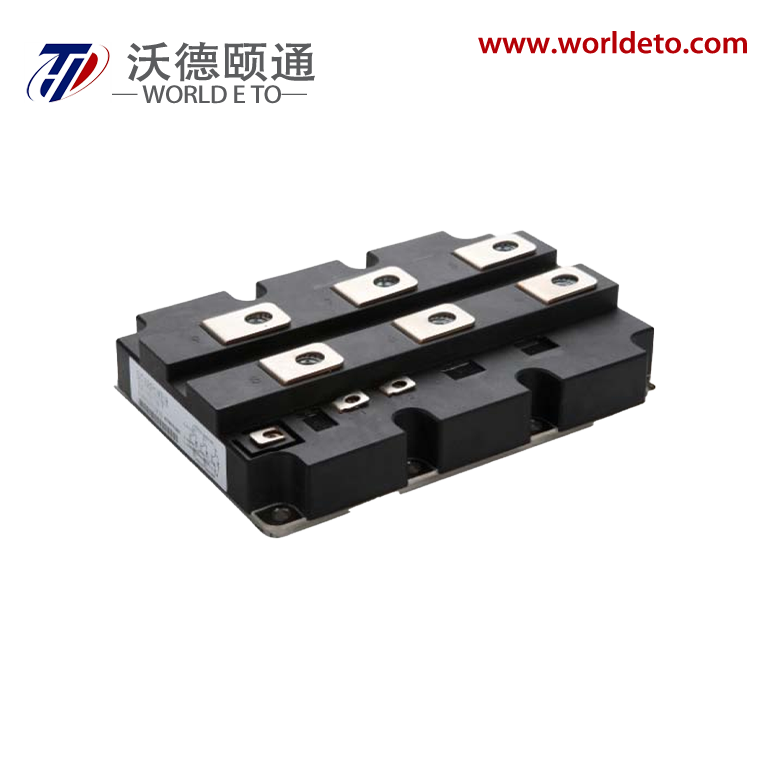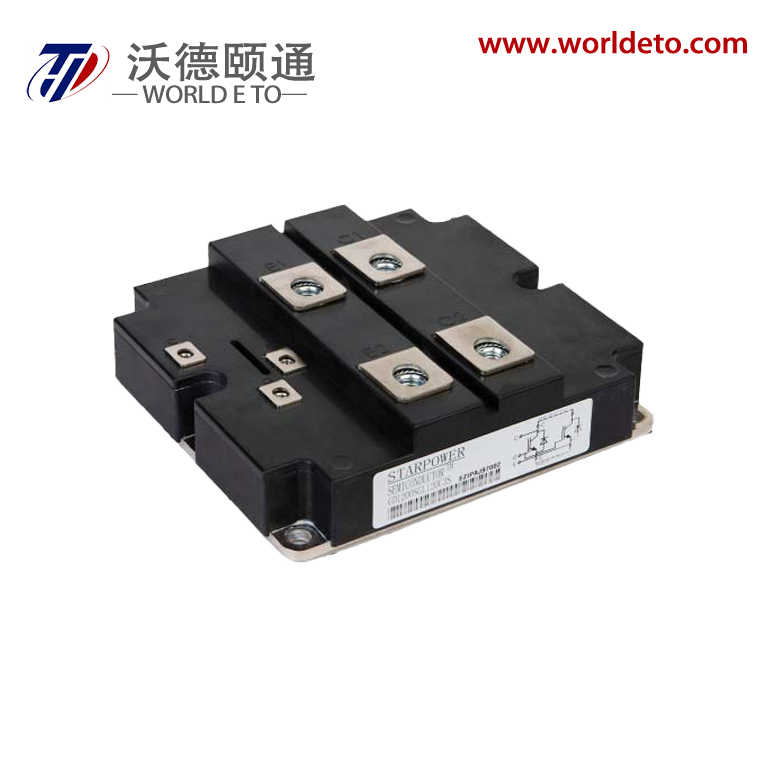Common Failure Modes in IGBT Modules
Thermal Stress and Overheating
IGBT modules tend to suffer from thermal stress because they operate in environments where temperatures frequently go beyond what they're designed for. When this happens, the heat starts breaking down the materials inside these modules, especially the silicon components and metal connections, which can ultimately lead to system failure. Preventing these kinds of problems requires regular checks on junction temperatures and proper installation of heat sinks or other cooling mechanisms. Many manufacturers have found that implementing these monitoring practices significantly reduces overheating risks and actually doubles the lifespan of IGBT modules in real-world applications. Proper thermal management isn't just about avoiding breakdowns—it also saves money on replacements and downtime costs in the long run.
Voltage Spikes and Overvoltage Conditions
Voltage spikes often come from inductive loads and can go way beyond what an IGBT module is rated for, which puts it at real risk of failing completely. When this happens, the sudden surge damages the gate oxide layer inside the IGBT, and that definitely hurts how well it works over time. The best way to keep these modules safe from such electrical stress? Snubber circuits work wonders here, along with following good design guidelines during installation. Putting these protective measures in place helps shield IGBTs from those unpredictable voltage jumps, so they keep running reliably without surprises down the road.
Manufacturing Defects and Material Fatigue
When it comes to IGBT modules, manufacturing flaws like weak bonding between components or issues with encapsulation really hurt long term reliability. Material fatigue is another big problem that develops gradually through repeated cycles of stress and release, often causing breakdowns right where they're least expected in the module structure. Strict quality checks throughout the manufacturing process combined with better quality raw materials go a long way toward preventing most of these problems. The industry has seen some impressive improvements recently by paying closer attention to these details, which not only makes the modules last longer but also helps them perform consistently under tough operating conditions that would otherwise cause premature failure.
Key Signs of IGBT Module Failure to Monitor
Erratic Switching Behavior and Blown Fuses
When IGBT modules start showing erratic switching behavior, this usually points to some kind of problem either with the gate driver circuitry or possibly degraded gate oxide layers. The result? Modules might fail to switch at all when they should be active, or worse still, get locked into staying on continuously which can wreck other components in the system. Technicians will often notice blown fuses too - repeated fuse failures typically mean there's way too much current flowing through the module, or maybe even internal short circuits developing somewhere inside. These kinds of issues don't just appear out of nowhere; experienced engineers look for telltale signs like abnormal heat buildup around certain areas of the module housing.
The drive may not start or unexpectedly shut down during startup.
Output phases could display a dead short to ground or the DC bus.
Fuses might continue blowing even after replacements.
Oscilloscope traces may reveal irregular switching pulses.
Monitoring current waveforms and implementing correctly rated fuses can help detect and diagnose these issues early, preventing further damage to the system.
Excessive Heat Buildup During Operation
Excessive heat buildup during IGBT module operation can lead to thermal runaway, a self-perpetuating cycle of increasing temperatures that can quickly lead to failure. This condition becomes critical when one module begins to operate significantly hotter than others. The warning signs of thermal stress include:
Heat sinks feeling hot to the touch, even under light loads.
Temperature sensors tripping early, triggering premature shutdowns.
Adjacent components showing signs of overheating or discoloration.
Proper thermal management and efficient cooling techniques, such as using advanced heat sinks or cooling fans, can mitigate thermal loads on the IGBTs, extending their lifespan and maintaining performance.

Unbalanced Motor Output in Servo Drives
Unbalanced output in servo drives can lead to vibrations and inefficiencies, hinting at potential IGBT module failure. This issue manifests as jittery motor behaviors and discrepancies between expected and actual motor outputs. The symptoms of unbalanced output may include:
The motor stuttering or vibrating under load.
Distorted output waveforms or loss of symmetry.
Motor RPMs that donât match the commanded speed.
Regular performance monitoring can help identify these imbalances early, allowing for timely maintenance. Advanced diagnostic tools can quickly pinpoint the root causes of such issues, helping maintain optimal servo drive performance.
Visible Physical Damage Indicators
When IGBT modules show visible signs of damage, it usually means trouble is on the way. Checking for things like burn marks, odd coloring changes, or cracks in the case should be part of regular maintenance routines. Look closely at those collector and emitter connection points where burn spots often appear first. Swollen cases or boards showing discoloration are red flags too. Charred traces on circuit boards point to serious problems inside, probably caused by voltage surges or heat buildup over time. Combining routine visual checks with some basic electronic testing helps catch these issues before they become major failures. Keeping track of what gets spotted during inspections creates a useful history that makes predicting when parts need replacing much easier down the road. This kind of proactive approach keeps systems running smoothly and avoids unexpected breakdowns.
Preventive Strategies for IGBT Module Longevity
Optimized Thermal Management in Power Devices
Getting thermal management right makes all the difference when it comes to cutting down on thermal stress and making those IGBT modules last longer. When good quality thermal interface materials are used, heat gets dissipated much better, so there's less chance of things getting too hot. Checking temperatures regularly helps spot problems before they become major headaches. Most engineers know this from experience. These checks catch situations where heat might build up unexpectedly, giving technicians time to fix whatever's causing the issue before it actually breaks something. Taking this kind of forward thinking approach keeps IGBTs running for years instead of months while maintaining how well the whole system works day after day.
Surge Protection for Emergency Power Systems
Protecting IGBT modules within emergency power systems requires proper installation of surge protection devices. These protective components serve as barriers against voltage spikes that might otherwise wreak havoc on sensitive electronics. When surge protection is properly integrated into the system design, it maintains reliable operation during high demand periods and keeps the whole power setup stable when needed most. Regular inspection and testing of these protective elements should be part of any maintenance schedule too. After all, what good is having surge protection if it stops working after years of service? Testing confirms continued effectiveness and prevents those costly surprise breakdowns that nobody wants during an actual emergency situation.
Precision Welding Techniques in Manufacturing
Getting precision right with welding matters a lot when making sturdy IGBT modules capable of handling material fatigue over time. When manufacturers use better welding techniques, they create stronger connections between components which makes these modules last longer and work better overall. Fewer breakdowns mean less time spent fixing things during operation and fewer customers coming back with warranty issues. While there's definitely a cost involved upfront for quality manufacturing, most companies find that reliable products pay off in the long run. The extra money spent initially translates into smoother running systems and parts that don't need replacing so often, something every business owner appreciates when looking at their bottom line.
GD75FFX170C6SA: A Robust Solution for High-Power Applications
Trench IGBT Technology for Reduced Thermal Stress
The GD75FFX170C6SA makes use of trench IGBT technology which helps cut down on thermal stress in those high power devices we all know and love. What happens here is that electrons can move around better, so thermal management becomes much more efficient. When heat spreads out properly inside the module, it keeps things running at their best temperature range most of the time. Tests show pretty clearly that these trench IGBTs, including our friend the GD75FFX170C6SA, tend to hold up better when pushed hard, particularly where heat management matters most like in precision welding equipment or servo drive systems. The improved efficiency means longer life for the device obviously, but there's another benefit too - operations run smoother and faster day after day without breaking a sweat.
10µs Short Circuit Protection Mechanism
The GD75FFX170C6SA stands out for its sophisticated short circuit protection system that reacts incredibly fast—in just 10 microseconds to be exact. Such quick action makes all the difference when faults occur, significantly cutting down on damage and boosting how dependable the whole setup remains over time. Real world tests show failure rates drop dramatically when this kind of protection is in place, stopping those annoying interruptions before they happen. These lightning quick responses make the module a must have for places where things really matter, like backup power systems in hospitals or data centers where downtime simply cannot be tolerated.
High-Temperature Tolerance in Demanding Environments
The GD75FFX170C6SA works well even when temperatures climb, which means it can handle all sorts of different jobs without breaking down. What really stands out is how this component can withstand some serious heat without melting or failing, something that cuts down on breakdowns caused by overheating and adds years to its useful life. Market research shows companies are looking for semiconductors that won't quit when things get hot, and this part checks those boxes with solid reliability over time. We see it getting used a lot in places where staying cool isn't an option, think about inverter cores for industrial equipment or other power systems that run hot but need consistent performance.

